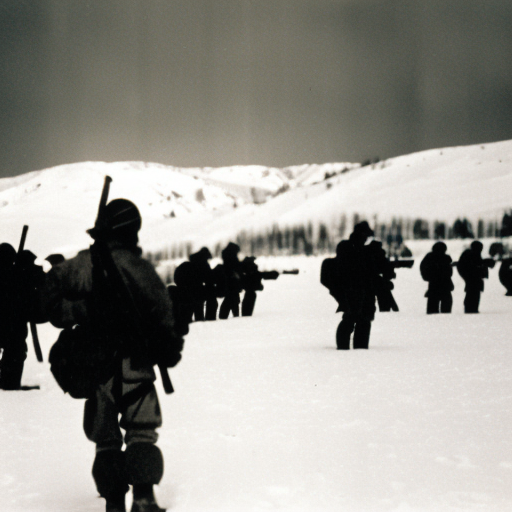Battle of Chosin Reservoir: A Turning Point in the Korean War
The Battle of Chosin Reservoir, also known as the Chosin Reservoir Campaign, was a crucial event that took place during the Korean War from November 27 to December 13, 1950. It was a major confrontation between the United Nations Command (UNC) and the Chinese People’s Volunteer Army (PVA). The battle occurred in the harsh winter conditions of North Korea, near the Chosin Reservoir, and had a significant impact on the outcome of the war.
Background:
The Korean War began in June 1950 when North Korea, supported by the Soviet Union and China, invaded South Korea. The United Nations, led by the United States, intervened to support South Korea. As the war progressed, the UNC forces, primarily composed of American and South Korean troops, advanced northward, pushing the North Korean forces back. However, in late October 1950, China entered the war on the side of North Korea, dramatically changing the dynamics of the conflict.
The Battle:
In late November 1950, the UNC forces, under the command of General Douglas MacArthur, launched an offensive to push the North Korean and Chinese forces out of North Korea. The 1st Marine Division, along with other American and South Korean units, was tasked with securing the Chosin Reservoir area.
The battle began on November 27, when the Chinese launched a massive surprise attack on the UNC forces. The Chinese outnumbered the UNC forces and used their knowledge of the terrain to their advantage. The battle quickly turned into a fierce and brutal struggle, with both sides suffering heavy casualties.
The UNC forces, despite being outnumbered and surrounded, fought valiantly to hold their positions. They faced extreme weather conditions, including freezing temperatures and heavy snowfall, which made the battle even more challenging. The Marines, in particular, displayed remarkable resilience and determination.
The Withdrawal:
Realizing that they were at risk of being completely surrounded and annihilated, General Oliver P. Smith, the commander of the 1st Marine Division, made the difficult decision to withdraw from the Chosin Reservoir. The withdrawal, known as the “Battle of the Chosin Reservoir,” was a remarkable feat of military skill and endurance.
The Marines fought their way through enemy lines, inflicting heavy casualties on the Chinese forces while sustaining significant losses themselves. They used a combination of aggressive tactics, including night attacks and coordinated artillery fire, to break through the encirclement.
Despite the challenges, the Marines successfully reached the port of Hungnam, where they were evacuated by sea. The successful withdrawal saved the 1st Marine Division from being destroyed and allowed them to fight another day.
Impact:
The Battle of Chosin Reservoir had a significant impact on the Korean War. Although the UNC forces suffered heavy casualties, the battle demonstrated their resilience and determination in the face of adversity. It also highlighted the effectiveness of the Marine Corps’ training and tactics.
The battle also had strategic implications. The Chinese, despite their numerical superiority, failed to achieve their objective of annihilating the UNC forces. This setback forced them to reconsider their strategy and adopt a more defensive approach, which ultimately prolonged the war.
Furthermore, the Battle of Chosin Reservoir boosted the morale of the UNC forces and the American public. The Marines’ heroic stand against overwhelming odds became a symbol of American bravery and determination. It also solidified the reputation of the Marine Corps as an elite fighting force.
In conclusion, the Battle of Chosin Reservoir was a pivotal event in the Korean War. It showcased the bravery and resilience of the UNC forces, particularly the Marines, in the face of overwhelming odds. The successful withdrawal from the Chosin Reservoir saved the 1st Marine Division from destruction and had a significant impact on the outcome of the war.












